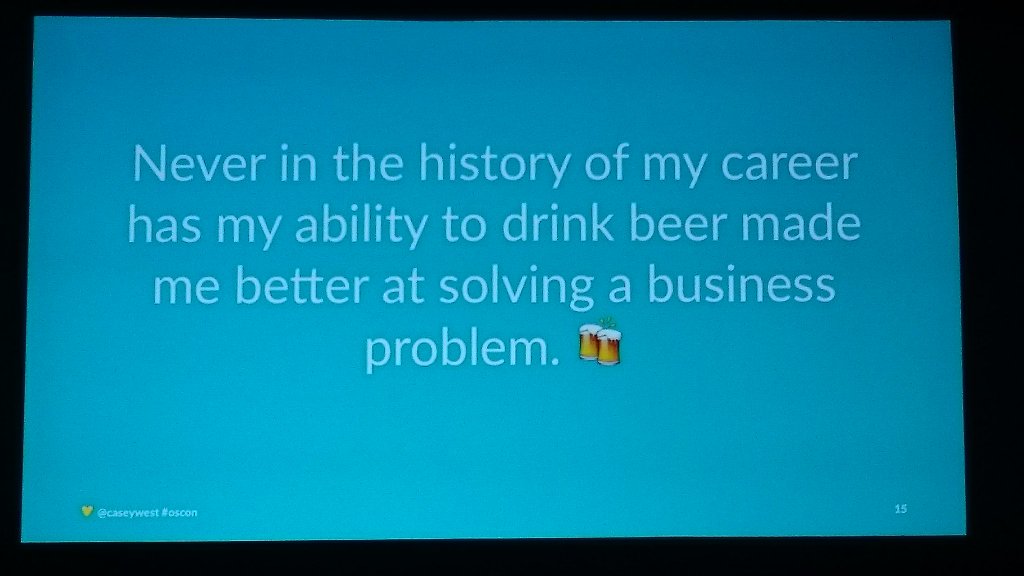[Note: comments on this post will be moderated by someone other than me.]

Recently, I’ve come to terms with the fact that I’m non-binary. Non-binary can be a bit of an umbrella term, but for me, being non-binary means I don’t identify as either a man or a woman. For me, gender is more like a 3D space, a universe of different traits. Most people gravitate towards a set of traits that we label as masculine or feminine. I don’t feel a strong pull towards being either really masculine or really feminine.
I’m writing this post for two reasons. The first reason is that representation matters. I know some non-binary people in tech and from the indie comics industry, but I’d love to see those voices and stories promoted. Hopefully being open and honest with people about my identity will help, both to raise awareness, and to give other people the courage to start an exploration into their own gender identity. I know talking with queer friends and reading comics helped me while I was working out my own gender identity.
The second reason I’m writing this is because there’s a couple ways allies can help me as I go through my transition:
- Use my new name (Sage) and my correct pronouns (they/them)
- Educate yourself on what it means to be non-binary
- Think about how you use gender in your software and websites
- Think about making your events more inclusive towards non-binary folks
Names
I’ve changed my name to Sage Sharp.
I would appreciate it if you could use my new name. If you’re thinking about writing about me, there’s a section on writing about individuals who are transitioning in “The Responsible Communication Style Guide”. You should buy a digital copy!
Pronouns and Titles
I use the pronoun ‘they’. If you’ve never had someone ask for you to use a specific pronoun, this Robot Hugs comic does a good job of explaining how to handle it.
If you have to add a formal title before my last name, please use ‘Mx Sharp’. ‘Mx’ is a gender-neutral honorific, like ‘Mr’, ‘Ms’, or ‘Mrs’. Mx is pronounced in a couple different ways: /ˈməks/, /ˈmɪks/ or /ˈmʌks/ (miks or muks). I like pronouncing it ‘mux’ like the electronics part multiplexer, but pick whichever pronunciation works for you. If you want to get really formal and are reaching for a term like ‘lady/gentlemen’, I prefer the term ‘gentleperson’.
I’ve found positive gender-neutral terms to describe myself with, like “dapper” or “cute”. I cringe every time a stranger attempts to gender me, since they usually settle on feminine forms of address. I wish more people would use gender-neutral terms like “folks”, “friend”, “comrade”, or say “Hello everyone!” or “Hi y’all” and leave it at that.
Being able to write in a gender neutral way is hard and takes a lot of practice. It means shifting from gendered terms like “sister/brother” or “daughter/son” to gender-neutral terms like “sibling” or “kid”. It means getting comfortable with the singular they instead of ‘she’ or ‘he’. Sometimes there isn’t a gender neutral term for a relationship like “aunt/uncle” and it means you have to make up some new term, like “Titi”. There’s some lists of gender-neutral titles but in general, just ask what term to use.
If this is all new and bewildering to you, I recommend the book ‘The ABCs of LGBTQ+‘. Another good book is ‘You’re in the wrong bathroom‘ which breaks down some common myths about non-binary and trans folks.
Gender Forms
I’m really not looking forward to my gender being listed as ‘other’ or ‘prefer not to say’ on every gender form out there. I don’t even know if I can change my gender in social media, email, credit cards, banking… It’s a giant headache to change my name, let alone hope that technology systems will allow me to change my gender. It’s probably a separate post all itself, or a topic for my Diversity Deep Dives mailing list.
If you’re a programmer, website designer, or user experience person, ask yourself: Do you even need to collect information about a person’s gender? Could your website use gender neutral language? If you do need to address someone in a gendered way, maybe you just need to ask for their preferred pronouns instead of their gender? Could you drop the use of gendered honorifics, like ‘Miss’, ‘Mrs’ and ‘Mr’, or ‘Sir’ and ‘Madam’?
Inclusive Tech Groups
There’s a lot of tech spaces that are designed to help connect people from groups who are underrepresented in tech. Some tech groups are for “women” or “girls” (which can sometimes mean young women, and sometimes means adult women). It’s unclear whether non-binary folks are included in such groups, which puts me in the awkward position of asking all the groups I’m currently involved in if this is still a space for me.
I recommend reading Kat’s post on the design of gender-inclusive tech spaces. If you run a group or event targeted at gender minorities in tech, consider what you mean by “women only” and whether you want to be more inclusive towards non-binary folks that also want a space away from the patriarchy.
I know that in the past, a lot of folks looked up to me as ‘a woman in open source’. Some people felt I was a role model, and some people felt triumphant that I overcame a lot of sexism and a toxic environment to do some pretty badass technical work. Guess what? I’m still a badass. As a non-binary person, I’m still a minority gender in tech. So I’m still going to continue to be my badass self, taking on the patriarchy.
Promote Pronouns
When you meet someone, don’t assume what their pronouns are. As an ally, you can help by introducing yourself and normalizing pronoun usage. E.g. “Hi, my name is Victor, and I use he/him pronouns.”
If you’re a conference organizer, make sure all your name tags have a space for pronoun stickers. Have sheets of pronoun stickers at registration, and make sure the registration volunteers point out the pronoun badge stickers. If someone is confused about what the pronouns are, have a handout on pronouns and gender ready to give them. Wiscon is a conference that does a very good job with pronouns.
Don’t print pronouns collected from the registration system on badges without permission, or force everyone to put a pronoun on their badge. Some people might use different pronouns in conversation with different people, for example, if a person is “out” as non-binary to some friends but not their coworkers. Some people are genderfluid (meaning their feelings about their gender may change over time, even day to day). Some people might be questioning their gender, and not know what pronouns they want yet. Some people may prefer not to have a pronoun sticker at all.
The best practice is to provide space for people who want to provide their pronouns, but don’t force it on everyone.
What if people misgender you?
Some people who knew me under my old name might get confused when you use my new name. It’s perfectly fine to remind them of past work I did under my old name, while emphasizing my new name and pronouns. For example:
“Sage Sharp? Who’s that?”
“Sage is a diversity and inclusion consultant with Otter Tech. They were a Linux kernel developer for 10 years and wrote the USB 3.0 driver. They help run the Outreachy internship program.”
“Oh, you mean Sarah Sharp?”
“Yeah. They changed their name to Sage and they use ‘they’ pronouns now.”
I know it might be hard for people who have known me to get used to my new name and pronoun. You might even slip up in conversation with me. That’s ok, just correct the word and move on with your conversation. No need to apologize or call attention to it. We’re all humans, and retraining the language centers of our brains takes time. As long as I can see you’re trying, we’re cool.
What about your old accounts?
The internet never forgets. There will be old pictures of me, articles about me under my old name, etc. I’m fine with that, because that’s all a part of my past, who I was and the experiences that make me who I am. It’s as much a part of who I am as the tattoo on my arm. I don’t feel sad or weird looking at old pictures of myself. Seeing my longer haircut or myself in more feminine clothing can be surprising because I’ve changed so much, but after that initial reaction what I feel most is empathy for my past self.
At the same time, I’m also not that person any more. I’d like to see current pictures of me with my current name and correct pronoun.
If you see a news article that uses my old name, please let them know about my new name and pronouns. (But if it’s some troll site, don’t engage.) Several photos of my new style can be found here. If you see a social media website that uses my old name, don’t bother emailing me about it. I might have abandoned it, or found the name/gender change process to be too complex. Speaking of email, my old email addresses will still work, but I’ll respond back with my new email address. Please update your phone and email contacts to use the name ‘Sage Sharp’.
Phew, that was a lot to process!
We’ll keep it simple. Hi, my name is Sage Sharp, and I use ‘they’ pronouns. It’s nice to meet you!
